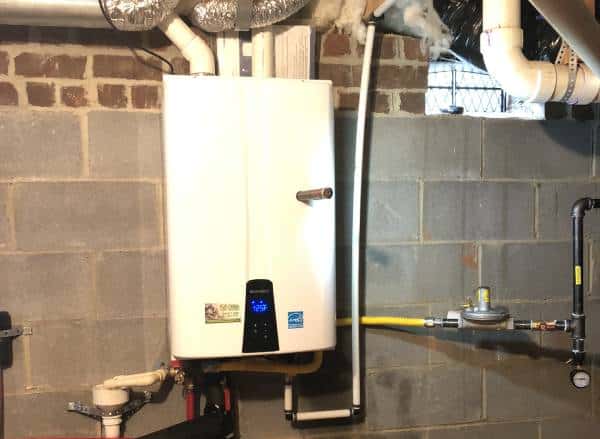
Should I Repair or Replace My Hot Water Heater?
Your water heater is a quiet workhorse — you don’t notice it until it stops. But replacing a water heater at the right time is much smarter (and cheaper) than waiting for a soggy surprise. Here’s the definitive guide on how to tell whether your heater is still doing the job or quietly counting down to failure.
1. Age matters — but don’t stop there
Most conventional tank water heaters last about 8–12 years; tankless units often last longer. The serial number on the tank will tell you the manufacture date if you know how to read it — many brands encode the year and month. If your heater is hitting the 10-year mark, treat it like a car with high mileage: start shopping and planning, even if it’s still working. Waiting until it fails often means emergency replacements at the worst possible time.
2. Strange noises are an alarm in disguise
Banging, popping, or rumbling are usually signs of sediment build-up. Over time minerals settle in the bottom of tanks and create a layer that traps water beneath it. When that water heats, it pops — and constant popping accelerates corrosion and heater stress. A noisy tank often means the internal environment is hostile; flushing the tank can help, but recurring noises are a signal to consider replacement.
3. Rusty or metallic water means trouble
If rusty water shows up from the hot tap (and not the cold), that points to internal corrosion. The sacrificial anode rod is meant to take that hit and protect the tank, but it wears out. Replacing the anode rod can buy time — but if corrosion is already evident in the water, the tank itself may be compromised. Don’t drink the hot tap water until you’ve diagnosed the cause.
4. Leaks Around the Tank? That’s Your Cue to Replace It
Even a slow drip at the base of the tank usually means the inner lining has started to fail. Patch jobs and band-aids don’t solve a corroded tank. If you find water pooling near the heater, turn off the power or gas and shut off the water at the main valve, then call for service. Quick action limits damage, but if the tank’s leaking, replacement is almost always the safest choice.
5. Performance has dropped (longer recovery, lukewarm showers)
If the tank seems to run out of hot water faster than it used to, or it takes longer to recover between showers, the heating element(s) may be failing or the tank may be full of sediment reducing usable capacity. Before replacing, get a diagnostic: element replacements or a thorough flush can restore performance — but diminishing returns are common with older tanks.
6. Your energy bill jumps for no other reason
A spike in energy use can be a silent indicator your water heater is losing efficiency. As components wear and sediment accumulates, the heater works harder to produce the same hot water. If maintenance doesn’t bring efficiency back, a new ENERGY STAR-rated model could lower your monthly costs and pay back the investment over time.
7. The anode rod, temperature setting, and pressure relief valve — small parts, big signals
Homeowners rarely check the anode rod, but it’s a key early warning device. If it’s mostly depleted, corrosion will move to the tank walls next. The temperature-pressure relief valve should never leak — if it does, that indicates overpressure or a failing valve. Setting your thermostat to around 120°F is safer and reduces stress on the tank. These small checks are cheap and can postpone replacement — or reveal that replacement is the smarter move.
8. You’re making other upgrades or planning a remodel
Sometimes replacement is about opportunity. If you’re renovating a bathroom, adding a larger tub, or switching to a gas or tankless system for better efficiency and space savings, replacing the heater proactively avoids future plumbing coordination headaches.
9. New technology and warranties matter more than you think
Modern tankless or hybrid heat pump water heaters can cut operating costs and free up space. Also, a new heater comes with a fresh warranty and fewer unknowns. If your current unit is out of warranty and has a history of repairs, upgrading may be a lower-stress financial choice than continued emergency fixes.
10. Safety red flags — gas smell, yellow flames, or pilot light trouble
If you smell gas, see a yellow (sooty) flame instead of blue, or your pilot won’t stay lit, call a professional immediately and leave the area. These are safety problems that require urgent attention — and they can be the deciding factor for replacing a unit if repairs are extensive.
Practical next steps, brought to you by your friendly local plumbing experts at Matthew’s Plumbing Solutions
- Look at the serial/manufacture date and note the age.
- Flush the tank annually to reduce sediment.
- Check the anode rod every 2–3 years.
- Listen for new noises and watch for rusty hot water.
- Track your energy usage for unexplained increases.
- If you spot leaks, shut off water and call a pro.
If you’d like a hands-on inspection, we’ll come out and give an honest read: what can be fixed, what will warrant a replacement soon, and when replacement actually saves money. You can count on Matthew’s Plumbing Solutions for clear advice and reliable work.
Call 919-525-1894 or reach us online for a water heater check — we’ll help you choose the smart timing and the right system for your Raleigh area home.
A well-timed upgrade keeps your showers warm, your bills reasonable, and your floors dry. That’s plumbing wisdom worth having in the neighborhood.